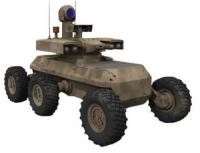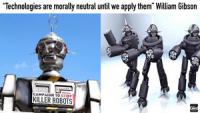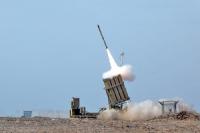-
Making scalable on-chip security pervasive
For the past decade, cybersecurity threats have moved from high in the software stack to progressively lower levels of the computational hierarchy, working their way towards the underlying hardware. The rise of the Internet of Things (IoT) has driven the creation of a rapidly growing number of accessible devices and a multitude of complex chip designs needed to enable them. A new DARP program focuses on addressing the economic and technical challenges associated with incorporating scalable defense mechanisms into chip designs.
-
-
U.S. industries turn to feds for help in economic race with China
In the U.S. economic battle with China, the Chinese government is often portrayed as a kingmaker, making large investments in research and paving the way for Chinese companies to thrive. China, it turns out, is a good foil for U.S. industries as they ask the U.S. government to do more to help them compete globally.
-
-
Polymers help minimize fuel explosions and fires from accidents and terrorist acts
When an act of terrorism or a vehicle or industrial accident ignites fuel, the resulting fire or explosion can be devastating. On Tuesday, scientists described how lengthy but microscopic chains of polymers could be added to fuel to significantly reduce the damage from these terrifying incidents without impacting performance.
-
-
Turning incident scenes into virtual 3D models
When officers arrive at a crime or crash scene, they have to spend a lot of time looking for evidence, processing it, taking photos of it, and documenting. To help make this process more efficient, the Department of Homeland Security’s (DHS) Science and Technology Directorate (S&T) has teamed up with the Israeli Police to invest in a new tool.
-
-
Killer robots already exist, and they’ve been here a very long time

The question is not so much whether we should use autonomous weapon systems in battle – we already use them, and they take many forms. Rather, we should focus on how we use them, why we use them, and what form – if any – human intervention should take.
-
-
Israel’s Carbyne, RapidSOS partner to improve 911 calls
Dialing 911 in an emergency is something that we’ve all been instructed to do since childhood. And old-fashioned, simple dialing is what most of us are still doing, even in an age of far more sophisticated technology. Next-gen public safety tech company will provide call takers with more informative real-time data to help first responders locate and treat callers.
-
-
Chances of UN banning killer robots looking increasingly remote

The Campaign to Stop Killer Robots warns chances of achieving a U.N. treaty banning the development, production and use of fully autonomous lethal weapons, also known as killer robots, are looking increasingly remote. Experts from some 80 countries are attending a weeklong meeting to discuss the prospect of negotiating an international treaty.
-
-
Detecting radioactive material remotely
Physicists have developed a powerful new method to detect radioactive material. By using an infrared laser beam to induce a phenomenon known as an electron avalanche breakdown near the material, the new technique is able to detect shielded material from a distance. The method improves upon current technologies that require close proximity to the radioactive material.
-
-
Dunford: Google’s work with China “challenges” U.S. military advantage

The top U.S. military officer has called out U.S. technology giant Google for its artificial intelligence venture in China, saying it “creates a challenge” in maintaining a U.S. military advantage over the Chinese.
-
-
Satellite technology detects, and may prevent, genocide
Many of the world’s worst human rights abuses, including genocides, occur in areas that are difficult to observe. “Smallsat” — short for small satellite — technology can detect human rights abuses and violations. The information collected by this technology provides evidence that can be used to corroborate refugee accounts of atrocities in international courts.
-
-
Cyber toolkit for criminal investigations
cybercrimes reached a six-year high in 2017, when more than 300,000 people in the United States fell victim to such crimes. Losses topped $1.2 billion. Cybercriminals can run, but they cannot hide from their digital fingerprints.
-
-
Keeping first responders, high-risk workers safer
Researchers have created a motion-powered, fireproof sensor that can track the movements of firefighters, steelworkers, miners and others who work in high-risk environments where they cannot always be seen.
-
-
Smart sensor to enhance emergency communications
First responders run toward danger; their jobs require it. Often, their only connection to the outside world during these rescue missions is their colleagues at the command centers who coordinate the rescue effort. with the ubiquity of IoT devices now, first responders have access to a vast, timely, and smart network of connections to the outside world.
-
-
Forecasters use Iron Dome science to handle disasters

Typhoons, floods, droughts, earthquakes, hurricanes, wildfires — the frequency and intensity of natural disasters across the globe are worsening, and these deadly events could continue plaguing the planet as a result of climate change. Iron Dome tech firm uses rocket science to enable utilities to plan for and manage effects of wildfires, storms, hurricanes and earthquakes.
-
-
Laying groundwork for off-world colonies

Space economy is estimated to reach $1.1 trillion by 2040, but before civilization can move off world it must make sure its structures work on the extraterrestrial foundations upon which they will be built. Researchers are already laying the groundwork for the off-world jump by creating standards for extraterrestrial surfaces.
-
More headlines
The long view
Risk Assessment with Machine Learning
Researchers utilize geological survey data and machine learning algorithms for accurately predicting liquefaction risk in earthquake-prone areas.
Bookshelf: Smartphones Shape War in Hyperconnected World
The smartphone is helping to shape the conduct and representation of contemporary war. A new book argues that as an operative device, the smartphone is now “being used as a central weapon of war.”
New Approach Detects Adversarial Attacks in Multimodal AI Systems
New vulnerabilities have emerged with the rapid advancement and adoption of multimodal foundational AI models, significantly expanding the potential for cybersecurity attacks. Topological signatures key to revealing attacks, identifying origins of threats.
